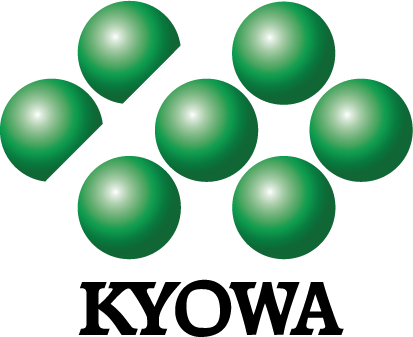Promotional Features
Cognizin Citicoline: A brain health ingredient supported by clinical trial data
Demand for brain health supplements has climbed steadily in recent years. Rising awareness of the role of nutrition and bioactives in cognition and growing consumer interest in proactively improving health have driven the trend, creating a billion dollar market in the process. Yet, for all its advances, the brain health market remains underdeveloped, with too few ingredients being backed up by the extensive data from rigorous tests in humans that are needed to convince sceptical consumers.
The lack of such data means products to improve the health of the brain, the organ that is arguably most important to people, remain a small subsection of the overall supplement market. Nutrition Business Journal valued the cognitive market in the United States in 2014 at $1.2 billion. To put that figure in context, the same journal calculates the entire US supplement industry is worth just shy of $37 billion, suggesting brain health products account for just 3% of all sales. Given the importance of the brain, it seems implausible that the market is currently fulfilling its potential.
If the cognition market is to come to represent a proportion of the overall supplement market that is more indicative of the importance of brain health, ingredient suppliers must provide manufacturers with indisputable data demonstrating the efficacy of their products. Armed with such study data, manufacturers can make science-supported brain-health marketing claims and have confidence they are selling supplements that make a meaningful difference to the lives of consumers. The growth of the sector will be fueled by efficacy data.
In recent years, efficacy data have started to accrue around some ingredients, positioning them to be at the forefront of the rise of the brain health supplement market. Citicoline, the rate limiting intermediate in the process through which phosphatidylcholine is generated from choline, is one such ingredient. When consumed, citicoline, a natural substance found in every cell of the body, is broken down into choline and cytidine, which pass across the blood-brain barrier. Once in the brain, the enzymes in phosphatidylcholine synthesis remake citicoline from these constituent parts.
Showing citicoline’s effect on the brain
Interest in the role of citicoline in brain health dates back decades, but the concerted generation of data to support its use in supplements is a more recent phenomenon. The drive to assess the effect of the ingredient in healthy individuals has been supported by Kyowa Hakko, which has made its Cognizin citicoline product available to teams at Harvard Medical School, the University of Utah and other research institutions over the past decade. This work has created a pool of data to support the effect of citicoline, both in terms of its impact on cells in the brain and outcomes in users.
The initial breakthrough came in 2008, when a team at Harvard Medical School led by Marisa Silveri imaged the brains of 16 healthy men and women who had taken a six-week course of either 500 mg or 2000 mg of Cognizin citicoline. Using phosphorous magnetic resonance spectroscopy, Silveri and her colleagues detected significant increases in certain phosphate metabolites in the frontal lobe, specifically a region of the brain also known as the anterior cingulate cortex (ACC), as compared to the parieto-occipital cortex. The ACC is responsible for attention and other cognitive functions.
Levels of phosphocreatine and beta-nucleoside triphosphates, largely adenosine triphosphate (ATP), increased by 7% and 14%, respectively. Other observed changes included an increase in the ratio of phosphocreatine to inorganic phosphate and a 26% acceleration in the formation of cell membranes in the brain. Overall, the effects were most pronounced among participants who received the lower dose of Cognizin citicoline. These data provided evidence to support two hypotheses regarding the effect of citicoline on the brain.
Firstly, the 14% increase in ATP, which transports chemical energy in cells, showed that citicoline can affect energy levels in the brain. As the most metabolically active organ in the human body, the brain needs the energy resources associated with ATP to function effectively and perform maintenance tasks that prevent deterioration. By linking citicoline to an uptick in ATP, Silveri added credence to the idea that citicoline may affect cognitive performance, both in the near and long term. Choline, which as a derivative of citicoline shares many of its effects, is not associated with increased ATP.
The second hypothesis supported by the Silveri paper relates to the formation of cell membranes. Earlier studies in rats had linked choline to an increase in the synthesis of membrane phospholipids in neural tissue, a finding that was in keeping with knowledge that citicoline provides precursors for the production of these molecules. In particular, citicoline is the rate limiting step in the synthesis of phosphatidylcholine, a phospholipid that makes up about 30% of those in the cell membranes of the brain. The Silveri data showed supplementation aids synthesis of this key constituent of brain tissue.
Generating outcomes evidence
While the Silveri study showed citicoline acts on brain biochemistry as expected, it did nothing to demonstrate that the changes induced by supplementation improve cognitive function. In light of this limitation, Erin McGlade of the University of Utah Brain Institute and her colleagues designed a study to assess the effect of Cognizin citicoline on the performance of sixty healthy, 40 to 60-year-old women. Participants were randomized into three arms, allowing McGlade to compare outcomes in women who had taken daily 250 mg or 500 mg doses of citicoline against those who received a placebo.
Each participant took the Continuous Performance Test II, a computerized assessment of sustained and selective attention, at the start of the study and after four weeks of treatment with either one of the two doses of citicoline or the placebo. The test entails pressing the spacebar when any letter of the alphabet other than ‘X’ appears on the screen. This results in data showing two types of errors. One, dubbed omission, arises when the participant fails to respond to a letter other than ‘X.’ The other, commission, occurs when the participant presses the spacebar in response to the letter ‘X.’
Participants who took 250 mg of citicoline made significantly fewer omission and commission errors than their peers in the placebo arm. The 500 mg cohort was also associated with fewer errors than the placebo arm, although the difference in omission errors fell short of statistical significance. Even with this caveat, the authors concluded citicoline has a future in brain health. “Our findings suggest that citicoline may improve attentional performance in middle-aged women and may ameliorate attentional deficits associated with central nervous system disorders,” McGlade wrote.
Expanding the case for citicoline
The positive data in middle-aged women led McGlade to assess the effect of Cognizin citicoline in another group that, for different reasons, can benefit brain health supplements: Adolescents. While demand from middle-aged people is being driven by worries about deterioration in brain function, teenagers have more immediate concerns about their levels of attention and focus. McGlade set out to test if citicoline could help with these concerns by giving 75 healthy adolescent males one of two doses of citicoline or a placebo for four weeks.
As in the previous study, participants took the Continuous Performance Test II at baseline and after 28 days of supplementation. McGlade also put the adolescents through the Finger Tap Test and Ruff 2&7 Selective Attention Test, which respectively assess motor speed and visual attention. To control for the range of weights of the participants, which spanned from 38 to 104 kg, the study divided the dose received by the weight of the individual. This calculation resulted in a weight-adjusted dose of citicoline.
When the weight-adjusted doses were plotted against Ruff 2&7 Accuracy Change Score, McGlade saw a positive correlation, implying a dose-dependent relationship between citicoline and performance on the test of sustained and selective attention. Similarly, plotting weight-adjusted doses against commission and omission errors revealed an inverse relationship, with participants who took more citicoline relative to their weight making fewer mistakes on the test. McGlade also saw improved attention and psychomotor speed in the citicoline arm as compared to placebo.
Ongoing research
Collectively, the three studies represent a multi-pronged argument in favor of the effectiveness of supplementation with citicoline. Silveri laid the foundation for the argument by demonstrating that citicoline has an effect on key biochemical pathways in the brain. McGlade then added another layer to the reasoning by linking use of citicoline to improved cognitive function outcomes in two of the main demographics of the brain health market. The data on focus and attention, ATP levels and phospholipid metabolism have also given credence to the stance that citicoline is superior to choline.
Having built up this body of data on citicoline, researchers are now looking to replicate the results. In a demanding regulatory and consumer environment, such affirmation and expansion of data is vital if the brain health ingredient market is to deliver on its potential to become a significant opportunity for supplement manufacturers, while also making a meaningful difference to the near and long-term cognitive function of the public.







